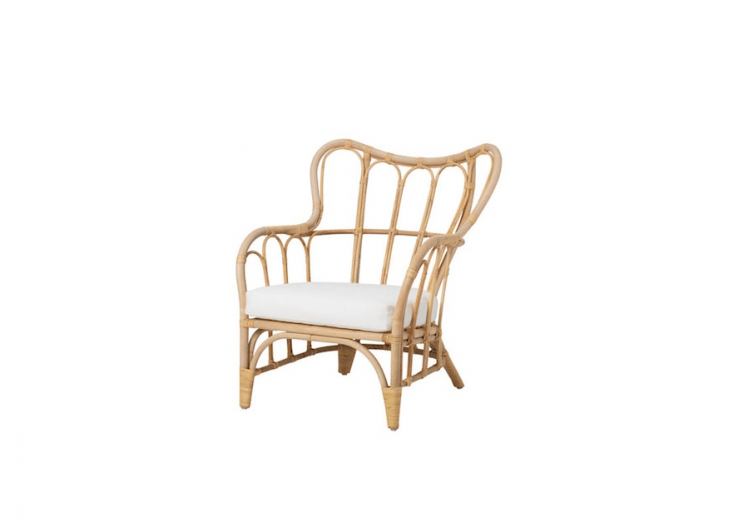Who couldn’t use more living space? Happily, anyone can create an outdoor room from scratch without breaking the budget. It doesn’t matter if your outdoor space is as narrow as an apartment balcony or as large as a sprawling backyard. All you need are a few basics:
Big or small, the most important design rule when you create an outdoor room is to pay attention to the scale of the available space. You may already have elements in place to play the role of “walls,” floor, and “ceiling.” If not, you can create a sense of enclosure with inexpensive materials (such as gravel or decomposed granite) or by using existing landscape features (such as a hedge, retaining walls, or a balcony railing). As for furnishings? We’ve got a few suggestions for simple, versatile seating that won’t break the bank.
Here are five ideas to create an outdoor room on a budget:
Photography by Matthew Williams for Gardenista except where noted.
1. Start on Level Ground

Site an outdoor living space on level ground. If you already have a balcony, deck, or patio to work with, you’re in luck. If not, find a spot that looks flat (if you’re unsure, check the elevation with a string level). In a small space, you can cover existing grass or weeds with a weed barrier fabric to create a base for a new outdoor living space.

Above: A 150-foot roll of Commercial All Weather Landscaping Ground Cover is $109.81 from Home Depot.
If you’re designing a larger outdoor space (as shown above), dig up grass or weeds, tamp down the earth with a roller, and check the elevation to make sure it’s level. Add a layer of landscape fabric (to prevent new weeds from sprouting).
2. Lay a Floor

A floor is an essential feature of any room. It should feel solid, level, and secure underfoot.
For an outdoor room, natural materials—such as gravel or stone pavers—will blend easily with features in the surrounding landscape. Decomposed granite (as shown above) is a fine gravel composed of particles of natural granite. Because of the small diameter of the rock (under 3/8 inch), DG is more stable than gravel and can be used either in place of gravel or as a base layer in which to set concrete pavers.
The cost of DG is relatively low compared to other paving options: the raw material costs from $40 to $50 per cubic yard and is available from landscape suppliers. See more at Hardscaping 101: Decomposed Granite.
Another inexpensive flooring option is gravel: “A pea gravel walkway or patio costs about $5 per square foot, installed, including a layer of base rock,” writes Ellen. “If you’d like to install it yourself, it will cost half as much. Add in the cost of a header or Bender Board. A wood header is about $5 per linear foot; a metal header is $6 (black metal disappears well). You won’t need a header if you’re installing gravel against a house, fence, or raised bed.” See more in Hardscaping 101: Pea Gravel.
3. Add Walls

Indoor rooms have walls and in an outdoor space, you can create a sense of similar sense of enclosure if you define the perimeter with vertical elements. Unlike an indoor room with solid walls from floor to ceiling, however, all you need outdoors is a suggestion of walls to create a boundaries. A balcony railing, an established hedge, or an existing wall are all good options.

If you have no vertical elements to work with, lay out a garden bed at the edge of the outdoor room and plant perennials or shrubs to create the effect of a low wall.
4. Add a Ceiling

Ceilings protect us from the elements—sun, rain, or worse (bird droppings come to mind). In an outdoor space, a solid ceiling isn’t necessary or even preferred because you don’t want to block the expansive view of the sky. Instead, design your outdoor room to take advantage of a roof overhang. Or add a trellis or pergola to create a sense of shelter.

5. Choose Furnishings

Choose furnishings that fit the space to create a sense of flow and expansiveness. When you are choosing chairs or a sofa for an outdoor room, before you buy sit down and stretch out to make sure the seat feels comfortable. Remember that the purpose of outdoor lounge furniture is lounging.
Lightweight, portable, and folding furniture works especially well in climates where weather requires you to bring everything indoors for storage in winter months. (See our post later today on folding bamboo benches for some inexpensive options that will complement a number of different styles of architecture.

For outdoor spaces, I love woven furniture (as you can see above) because it’s light and airy and mixes well with other materials such as solid wood, concrete, and metal.

Chairs on the deck of a Cape Cod house (shown above) illustrate the versatility of woven furniture. Woven chairs look just as happy against this white clapboard facade as on the patio of my own stucco Spanish-colonial bungalow.
What do you need in addition to comfortable chairs? Side tables or a coffee table table can come in handy, as a place to put a drinking glass or a book.

6. Make a wish list for later.

Above: For more of this garden, see The “Anti-Trophy” Landscape: A Charming Country Garden in Columbia County, NY. Photograph by Rush Jagoe, courtesy of Berman Horn Studio.
With the basics in place, you can make a wish list for nice things to add later: lighting, a fire pit, a grill, and a dining table are elements that will make an outdoor room more versatile.
N.B.: Ready to take the next step? If you’re working on a garden rehab project or designing a new outdoor living space, start with our Garden Design 101 guides:
- Decks & Patios 101: A Design Guide.
- Landscaping Ideas: 10 Ways to Save Money During a Garden Remodel.
- Expert Advice: 10 Tips To Get Your Garden Ready for Spring.
- Outdoor Lighting Design Guide: Lights for Paths, Stairways, Walls, Entryways, and Landscape Uplights.








Have a Question or Comment About This Post?
Join the conversation